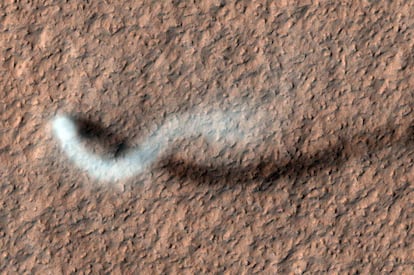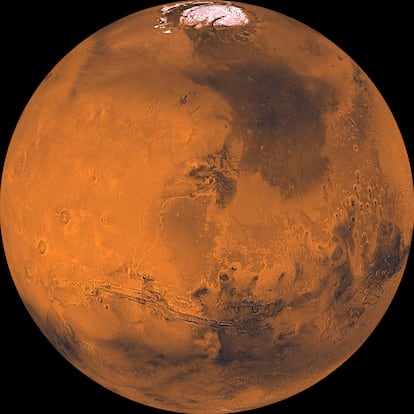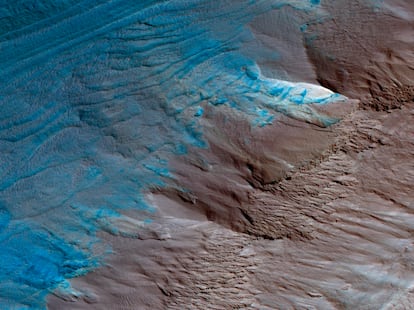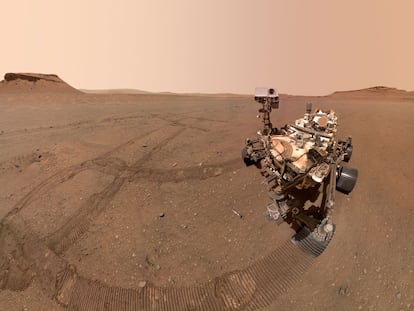Discovering the secrets of Mars: Why did it stop looking like Earth?
While the extensive exploration to date has produced a wealth of geological data, plenty remains unknown about the fourth planet from the Sun

Humans have been fascinated by Mars probably since the first of the species turned their gaze to the night sky. Space exploration today attests to that continuing fascination. Since the 1960s, more than 40 missions have tried to reach the Red Planet. As a result, there are currently three rovers active on the Martian surface, plus one lander and one helicopter, while eight orbiters circle the planet.
‘Many of the planets and moons in our solar system are very interesting, but Mars is a little special,’ said François Forget, an atmospheric scientist at Sorbonne University in France. ‘Nowadays, Mars is quite similar to Earth, but in the past – three to four billion years ago – it was even more similar.’
While the extensive exploration to date has produced a wealth of geological data, plenty remains unknown about the fourth planet from the Sun. Signs exist of a once vast ocean covering Mars’s northern hemisphere, while elsewhere lie scars carved out by rivers and glaciers. Yet the climatic processes that shaped the planet observed today remain a mystery.
As far back as four billion years ago, when life started to appear on Earth, Mars had rivers and lakes of liquid water. This raises the possibility that life also developed on Mars. But scientists are also interested in the processes that created the dry, desert planet seen today and what they could reveal about Earth’s climate.
Areas of Mars’s surface are more than three billion years old. Such records are unavailable on Earth as it has been fundamentally altered by life, which has erased much of the planet’s early history. Something else also makes Mars special: it’s a place where astronauts are hoping to go at some point. The European Space Agency, or ESA, and the US National Aeronautics and Space Administration – NASA – are working towards sending astronauts to Mars.
Forget is the lead researcher on an EU-funded project developing a model of how Mars evolved in a bid to answer some of the questions about the planet’s history. Called Mars Through Time, the project began in late 2019 and is due to last into most of 2025. Current climate models for Mars cover only short periods – several years – of its history and simulating the impact of features such as glaciers, rivers and lakes is tricky, particularly over long timeframes, according to Forget.

The project’s model is designed to run for thousands, or even millions, of years, simulating the past evolution of geological features along with the changing atmosphere. While current climate models require assumptions about where water sat on the planet’s surface, the evolution one for Mars is designed to work out where water would have naturally developed and reached a stable equilibrium, says Forget. This is done by incorporating more detail into the model such as the effect of microclimates. For instance, slopes that face a pole on a planet are usually cooler, potentially leading to the formation of ice and glaciers. On warmer slopes facing the equator, liquid water might be more likely.
‘If you wanted to simulate the Earth but you didn’t know anything about it, you would put water in the oceans and then slowly Earth’s evolution model would, for instance, build the Antarctic ice sheets,’ Forget said. ‘You want to be able to do the same on Mars, and of course, the model will create lakes, seas and rivers.’
It also incorporates large-scale changes that occur on longer geological timescales. The tilt of Mars rotational axis, known as obliquity, typically changes every 50 000 years and brings with it large scale climatic changes.
Carbon-dioxide glaciers
To use the model, the scientists rely on known data from Mars’s past such as geology and topography, the location of rivers, lakes and glaciers and atmospheric composition. They also make some assumptions around missing data. When the simulation runs, the scientists adjust their assumptions and parameters until the evolution of the model Mars fits with the existing knowledge of the planet in the past and the present. Once a model matches the geological records, it provides information on the environment, chemistry and atmosphere of the planet and how they changed, according to Forget.

So far, the model has confirmed that some strange-looking moraines – debris left behind by glaciers – are likely from ones made of frozen carbon dioxide. The simulations have also suggested how these CO2 glaciers could have formed and shown that they would have caused dramatic changes in the composition of Mars’s atmosphere.
To test one theory of how liquid water might have existed on the Martian surface, scientists plugged a hydrogen-rich parameter into their model to get a possible hint of how Mars’s climate might have become warm enough to sustain liquid lakes and rivers. The model showed that, if Mars had had a hydrogen-rich atmosphere in the past, it could have produced a significant greenhouse effect and boosted the planet’s temperature.
At the other end of the temperature spectrum, a better understanding of the formation of glaciers and where frozen water might exist today could help with manned missions to Mars. ‘Having access, without too much difficulty, to water ice on Mars will be very helpful, according to NASA,’ Forget said. ‘They have set up project teams looking at where water ice can be found and the Mars through time project can really contribute.’
The EU research could also provide information on where liquid water might be found. As it happens, these are areas where astronauts don’t want to land. That’s because of a concept known as planetary protection. The last thing astronauts want to do is contaminate Mars with microorganisms from Earth, particularly in liquid water where they could thrive.
The research referred to in this article has been funded through the EU’s European Research Council and the article was originally published in Horizon, the EU’s Research and Innovation journal.
Sign up for our weekly newsletter to get more English-language news coverage from EL PAÍS USA Edition
Tu suscripción se está usando en otro dispositivo
¿Quieres añadir otro usuario a tu suscripción?
Si continúas leyendo en este dispositivo, no se podrá leer en el otro.
FlechaTu suscripción se está usando en otro dispositivo y solo puedes acceder a EL PAÍS desde un dispositivo a la vez.
Si quieres compartir tu cuenta, cambia tu suscripción a la modalidad Premium, así podrás añadir otro usuario. Cada uno accederá con su propia cuenta de email, lo que os permitirá personalizar vuestra experiencia en EL PAÍS.
¿Tienes una suscripción de empresa? Accede aquí para contratar más cuentas.
En el caso de no saber quién está usando tu cuenta, te recomendamos cambiar tu contraseña aquí.
Si decides continuar compartiendo tu cuenta, este mensaje se mostrará en tu dispositivo y en el de la otra persona que está usando tu cuenta de forma indefinida, afectando a tu experiencia de lectura. Puedes consultar aquí los términos y condiciones de la suscripción digital.
More information
Archived In
Últimas noticias
Aquilino Gonell, former Capitol sergeant: ‘If it hadn’t been for the police, the US would be a dictatorship’
A hybrid building: Soccer pitch, housing, and a shopping mall
Europe urges Trump to respect Greenland following annexation threats
Science seeks keys to human longevity in the genetic mixing of Brazilian supercentenarians
Most viewed
- Alain Aspect, Nobel laureate in physics: ‘Einstein was so smart that he would have had to recognize quantum entanglement’
- Mexico’s missing people crisis casts a shadow over World Cup venue
- Alvin Hellerstein, a 92-year-old judge appointed by Bill Clinton, to preside over Maduro’s trial in New York
- Why oil has been at the center of Venezuela-US conflicts for decades
- Cuba confirms death of 32 of its citizens in the US attack against Venezuela










































